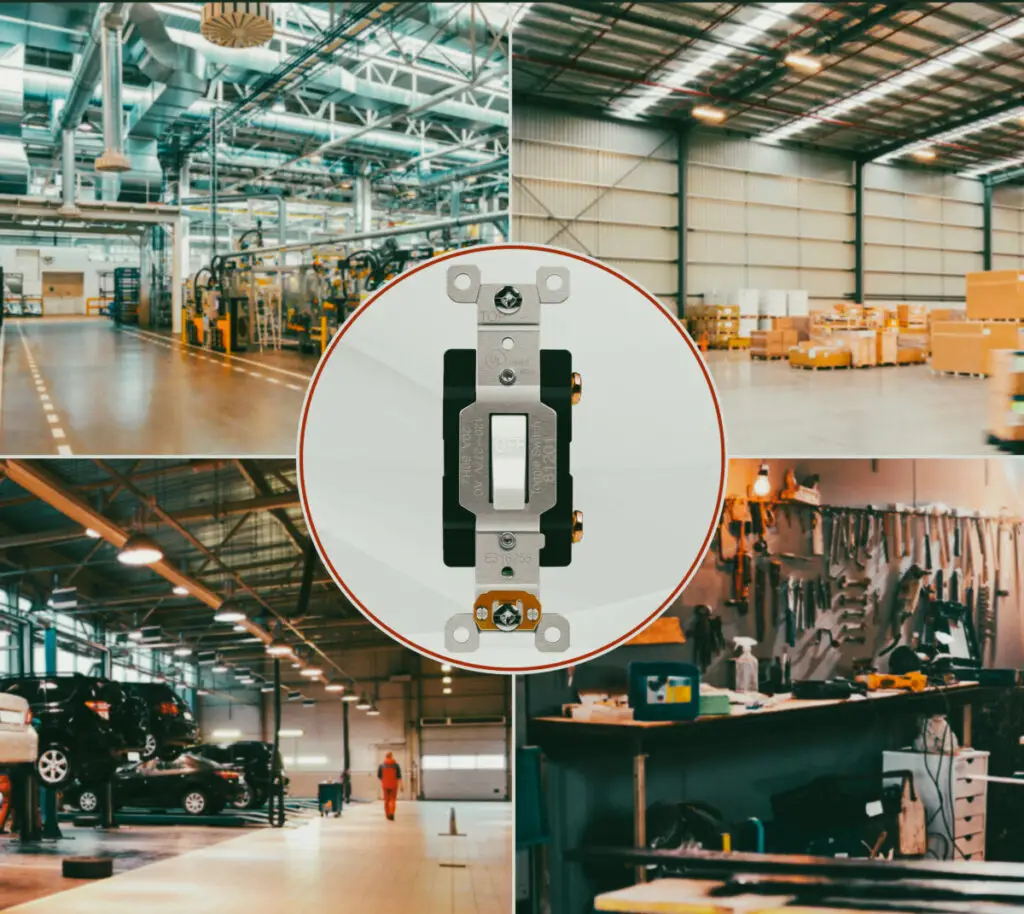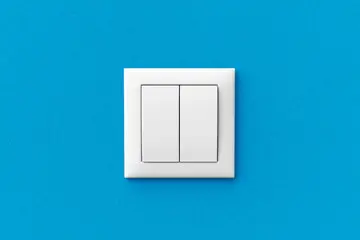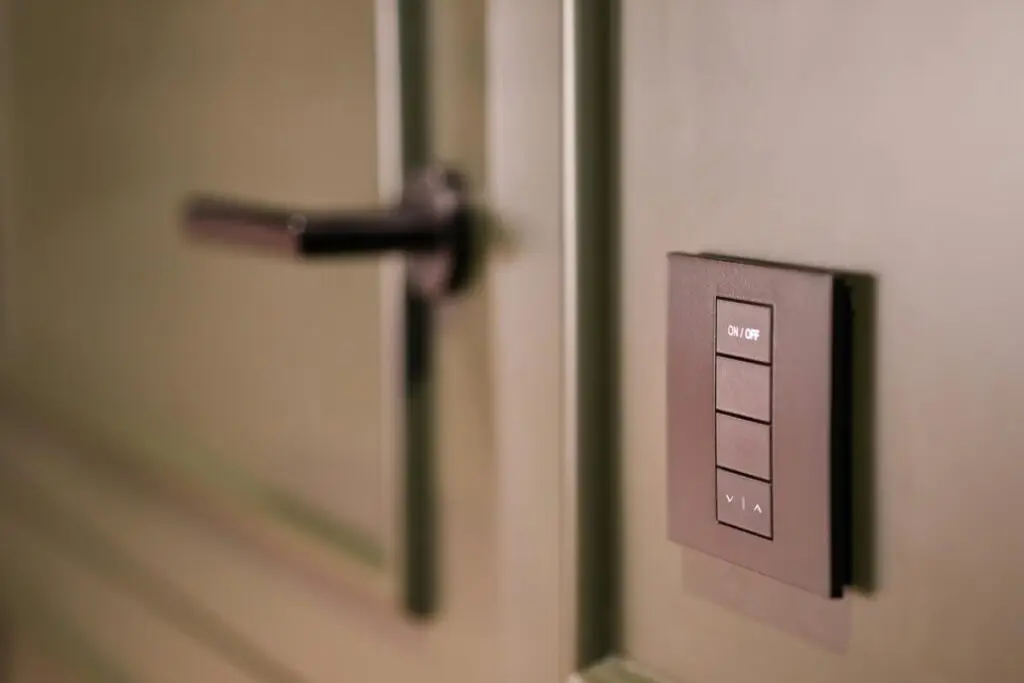Introduction
Selecting the right electrical switches for a commercial space is a crucial decision that impacts safety, efficiency, and user convenience. Unlike residential settings, commercial environments require switches that comply with National Electrical Code (NEC) standards, meet UL certifications, and support advanced automation and energy efficiency.
This guide will help you understand the different switch types, voltage ratings, NEC code compliance, and smart technology integrations that are essential when choosing the best commercial-grade switches for offices, retail spaces, industrial buildings, and more.
1. Understanding Commercial Switch Requirements
Key Factors to Consider
Before selecting switches, evaluate these critical factors:
- Load Capacity – Commercial switches must handle higher electrical loads than residential ones.
- Durability and Lifespan – Heavy-duty switches are necessary for high-traffic areas.
- Compliance with NEC Codes – Ensures safety and legal installation.
- UL Ratings and Certifications – Guarantees the switch meets electrical safety standards.
- Smart Automation Features – Enhances energy efficiency and remote control options.
NEC and UL Standards for Commercial Switches
- NEC 404.2(C): Specifies that commercial switches must have proper grounding and be rated for the circuit they control.
- UL 20 Certification: Ensures that general-use snap switches can safely control circuits up to 20A.
- NEC 210.70(A)(2): Requires light switches to be installed in entryways and specific work areas.
- UL 943 Certification: Covers ground-fault circuit interrupter (GFCI) switches required in wet locations.
Adhering to these guidelines ensures the longevity, safety, and efficiency of commercial switch installations.
2. Types of Commercial-Grade Switches
1. Single-Pole vs. Three-Way Switches
- Single-Pole Switches: Standard on/off control for individual light fixtures.
- Three-Way Switches: Allows control of the same fixture from multiple locations (common in hallways and large rooms).
2. Heavy-Duty Toggle Switches
- Designed for high-use areas in commercial environments.
- Rated for 20A or more, suitable for industrial settings, warehouses, and offices.
3. Smart Switches with Automation
- Wi-Fi and Zigbee/Bluetooth-enabled for remote control.
- Integrated with smart lighting systems like Lutron Caséta, Leviton Decora, and GE Enbrighten.
- Ideal for offices, retail spaces, and conference rooms to improve energy management.
4. Dimmer Switches for Commercial Spaces
- Compatible with 0-10V dimmable LED and fluorescent fixtures.
- Helps reduce energy costs and allows adjustable lighting in restaurants, theaters, and conference rooms.
- Compliant with ASHRAE 90.1 and Title 24 energy codes.
5. Motion Sensor and Occupancy Switches
- Automatically turns lights on/off based on room occupancy.
- Great for restrooms, storage rooms, and meeting areas to save energy.
- Available in passive infrared (PIR) and ultrasonic sensor technologies.
6. Tamper-Resistant and Weatherproof Switches
- NEC 406.12 Requirement: Tamper-resistant outlets and switches are mandatory in certain public spaces.
- Weatherproof options: Designed for outdoor or industrial settings with IP65+ ratings for dust and water resistance.
3. Smart Switch Integration in Commercial Buildings
The Role of Smart Switches in Modern Commercial Spaces
Smart switches provide enhanced control, energy efficiency, and automation. Many commercial properties are shifting to IoT-enabled switch systems that integrate with building management systems (BMS).
Benefits of Smart Switches in Commercial Applications
✔ Remote Operation – Adjust lighting and power from a mobile app or central control hub.
✔ Automated Scheduling – Reduces unnecessary energy usage by turning lights on/off based on occupancy patterns.
✔ Voice Control Compatibility – Works with Alexa, Google Assistant, and Apple HomeKit.
✔ Energy Monitoring Features – Helps reduce electricity bills by tracking power consumption.
Best Smart Switch Brands for Commercial Spaces
- Lutron Caséta – High-end smart dimmers and motion sensors.
- Leviton Decora Smart – Zigbee-enabled and Wi-Fi-controlled commercial switches.
- GE Enbrighten – Durable and industrial-grade smart switches for automation.
4. Installation and Safety Guidelines for Commercial Switches
Step-by-Step Installation Guide
Step 1: Turn Off Power at the Breaker Panel
- Always ensure the main power supply is disconnected before working on any switch installation.
Step 2: Verify Circuit Voltage
- Use a voltage tester to confirm the circuit is off.
- Match the switch voltage rating (e.g., 120V, 277V, or 480V) with the circuit requirements.
Step 3: Choose the Correct Wire Gauge
- 14 AWG for standard 15A circuits.
- 12 AWG or thicker for heavy-duty 20A or 30A commercial applications.
Step 4: Connect Ground and Load Wires Properly
- Ensure grounding per NEC 250.4(A)(5).
- Use wire connectors to secure line, load, and neutral wires.
Step 5: Secure the Switch and Test
- Mount the switch into the electrical box.
- Restore power and test for proper functionality.
Common Installation Mistakes to Avoid
🚫 Overloading the Circuit – Ensure the switch’s amp rating matches the circuit’s demand.
🚫 Skipping Grounding – Always ground commercial switches to avoid electrical hazards.
🚫 Using Incorrect Switch Types – Avoid using residential-grade switches in commercial applications.
5. Future Trends in Switch Technology for Commercial Spaces
1. AI-Integrated Lighting Controls
Advanced AI-powered systems predict energy usage patterns and adjust lighting automatically.
2. Energy-Efficient Wireless Switches
The rise of Z-Wave and Zigbee-based wireless switches eliminates the need for extensive rewiring.
3. Solar-Powered and Energy-Harvesting Switches
Upcoming innovations include self-powered switches that generate energy from ambient light or kinetic motion.
Conclusion
Choosing the best commercial switches requires considering factors such as NEC compliance, UL certification, voltage capacity, and smart automation compatibility. By selecting the right switches—whether they are heavy-duty, dimmable, motion-activated, or smart-enabled—businesses can achieve optimal safety, efficiency, and energy savings.
As commercial buildings continue to integrate smart automation and energy-efficient technologies, the role of advanced switch systems will become even more critical in modern workplace management.
By following proper installation and compliance guidelines, businesses can ensure long-term reliability and adherence to electrical safety codes.


